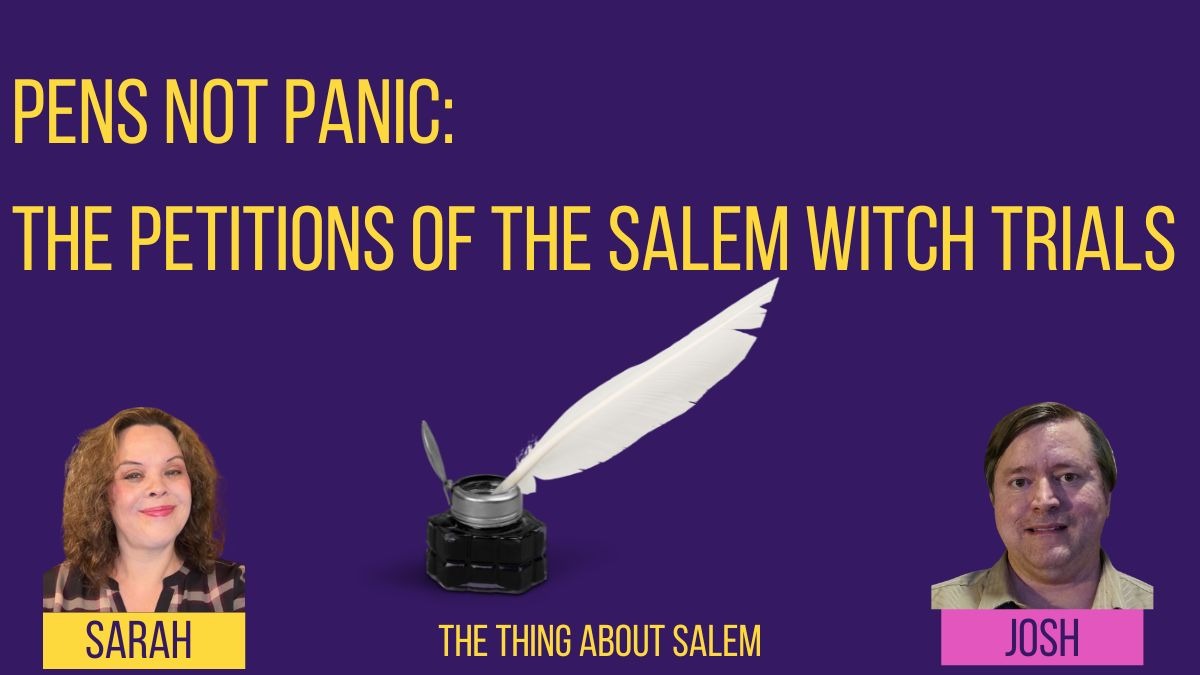What happens when your only defense against a death sentence is a handwritten letter? In 1692 Salem, petitions became lifelines for the accused, their families, and entire communities caught in the witch trial hysteria.
In this episode, we explore:
- Mary Easty’s remarkable final petition that prioritized saving others over herself
- The creative legal strategies colonists used to challenge “spectral evidence”
- How torture was used to extract confessions (and documented in writing)
- The economic reality of having family members imprisoned for witchcraft
- Community petitions that reveal the social chaos engulfing entire towns
- Why some people recanted their confessions—and what that tells us about coercion
From character witness statements to desperate pleas from prison, these historical documents reveal the human cost of mass hysteria and the courage it took to speak truth to power with nothing but ink and parchment.
Plus: The meaningful modern connection—how middle schoolers in 2022 successfully petitioned to clear a victim’s name, and why there’s still a bill before Massachusetts legislature today.
Perfect for history buffs, true crime fans, and anyone fascinated by how ordinary people navigate extraordinary circumstances.
Keywords: Salem witch trials, historical petitions, spectral evidence, Mary Easty, colonial justice system, Massachusetts history
Links
Salem Witch Trials Documentary Archive and Transcription Project
Records of the Salem Witch-Hunt
The Thing About Salem YouTube
The Thing About Salem Patreon
The Thing About Witch Hunts YouTube
The Thing About Witch Hunts Website

Leave a Reply